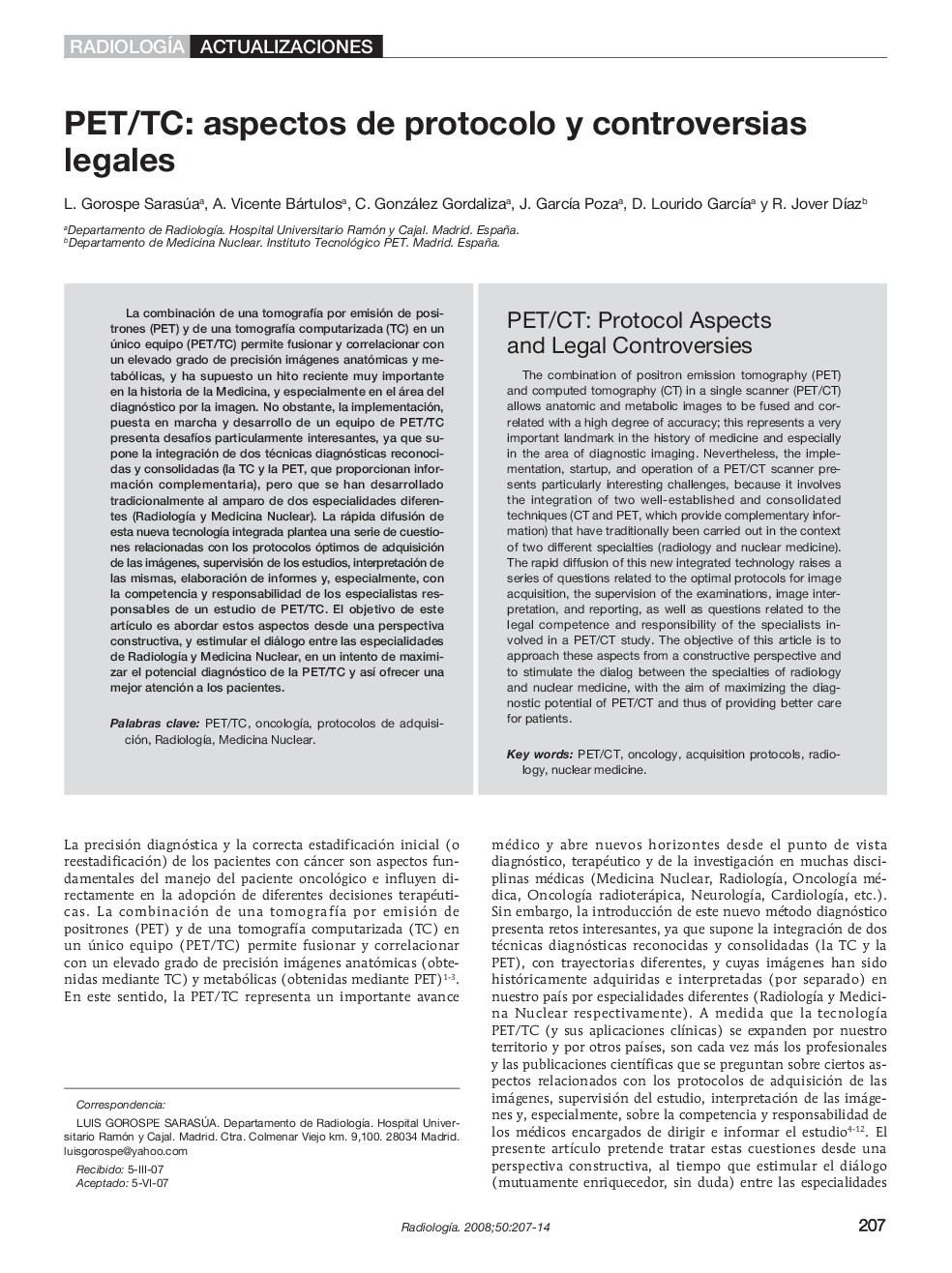| Article ID | Journal | Published Year | Pages | File Type |
|---|---|---|---|---|
| 4246176 | Radiología | 2008 | 8 Pages |
Abstract
The combination of positron emission tomography (PET) and computed tomography (CT) in a single scanner (PET/CT) allows anatomic and metabolic images to be fused and correlated with a high degree of accuracy; this represents a very important landmark in the history of medicine and especially in the area of diagnostic imaging. Nevertheless, the implementation, startup, and operation of a PET/CT scanner presents particularly interesting challenges, because it involves the integration of two well-established and consolidated techniques (CT and PET, which provide complementary information) that have traditionally been carried out in the context of two different specialties (radiology and nuclear medicine). The rapid diffusion of this new integrated technology raises a series of questions related to the optimal protocols for image acquisition, the supervision of the examinations, image interpretation, and reporting, as well as questions related to the legal competence and responsibility of the specialists involved in a PET/CT study. The objective of this article is to approach these aspects from a constructive perspective and to stimulate the dialog between the specialties of radiology and nuclear medicine, with the aim of maximizing the diagnostic potential of PET/CT and thus of providing better care for patients.
Related Topics
Health Sciences
Medicine and Dentistry
Radiology and Imaging
Authors
L. Gorospe Sarasúa, A. Vicente Bártulos, C. González Gordaliza, J. GarcÃa Poza, D. Lourido GarcÃa, R. Jover DÃaz,
